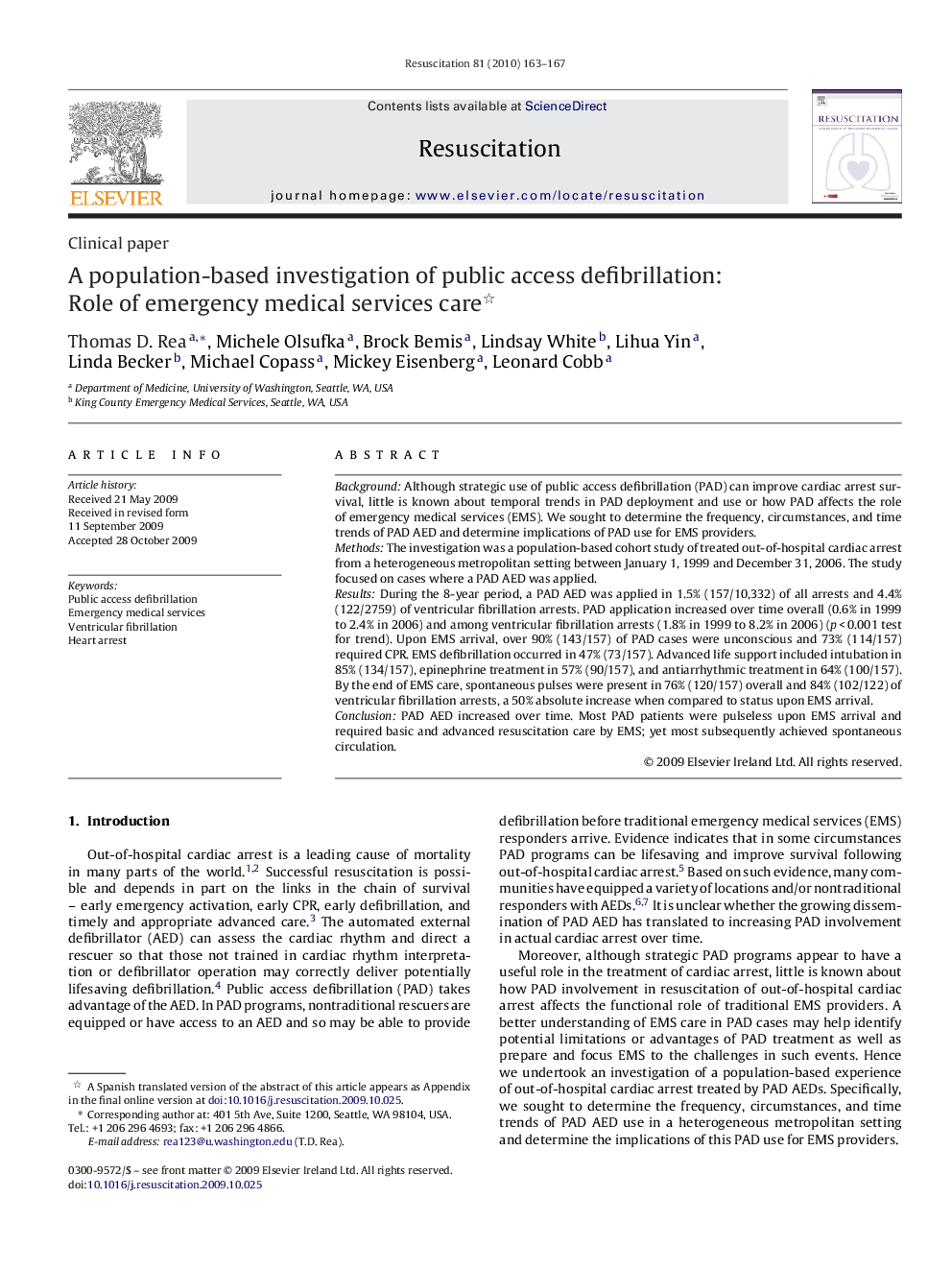| کد مقاله | کد نشریه | سال انتشار | مقاله انگلیسی | نسخه تمام متن |
|---|---|---|---|---|
| 3009819 | 1181499 | 2010 | 5 صفحه PDF | دانلود رایگان |

BackgroundAlthough strategic use of public access defibrillation (PAD) can improve cardiac arrest survival, little is known about temporal trends in PAD deployment and use or how PAD affects the role of emergency medical services (EMS). We sought to determine the frequency, circumstances, and time trends of PAD AED and determine implications of PAD use for EMS providers.MethodsThe investigation was a population-based cohort study of treated out-of-hospital cardiac arrest from a heterogeneous metropolitan setting between January 1, 1999 and December 31, 2006. The study focused on cases where a PAD AED was applied.ResultsDuring the 8-year period, a PAD AED was applied in 1.5% (157/10,332) of all arrests and 4.4% (122/2759) of ventricular fibrillation arrests. PAD application increased over time overall (0.6% in 1999 to 2.4% in 2006) and among ventricular fibrillation arrests (1.8% in 1999 to 8.2% in 2006) (p < 0.001 test for trend). Upon EMS arrival, over 90% (143/157) of PAD cases were unconscious and 73% (114/157) required CPR. EMS defibrillation occurred in 47% (73/157). Advanced life support included intubation in 85% (134/157), epinephrine treatment in 57% (90/157), and antiarrhythmic treatment in 64% (100/157). By the end of EMS care, spontaneous pulses were present in 76% (120/157) overall and 84% (102/122) of ventricular fibrillation arrests, a 50% absolute increase when compared to status upon EMS arrival.ConclusionPAD AED increased over time. Most PAD patients were pulseless upon EMS arrival and required basic and advanced resuscitation care by EMS; yet most subsequently achieved spontaneous circulation.
Journal: Resuscitation - Volume 81, Issue 2, February 2010, Pages 163–167